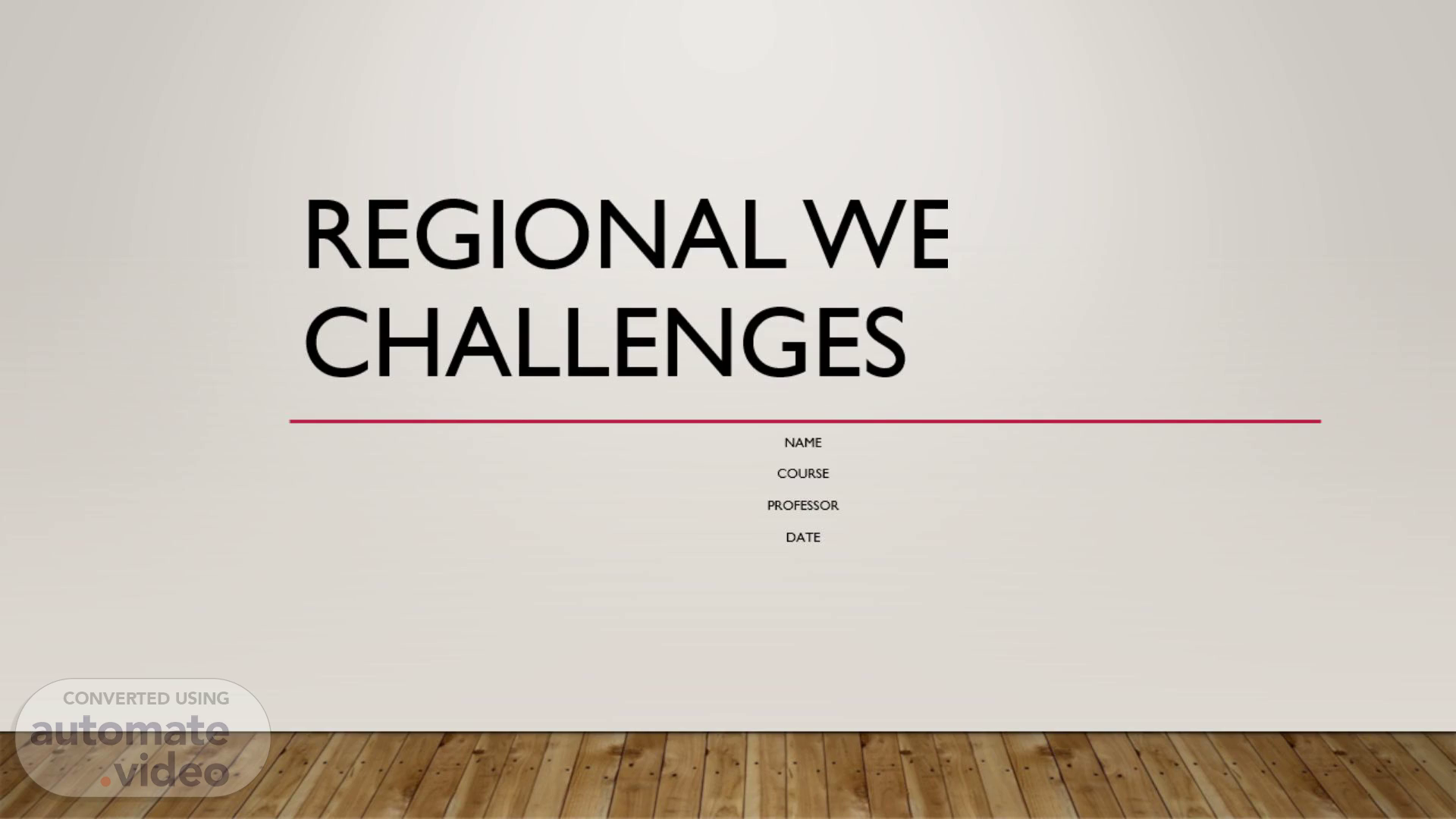
Regional Weather Challenges
Scene 1 (0s)
Regional Weather Challenges. Name Course Professor Date.
Scene 2 (6s)
Background. Coastal areas of Bangladesh, including Dhaka and Chittagong. Bangladesh is a low-lying deltaic country formed by the confluence of the Ganges, Brahmaputra, and Meghna Rivers. It is highly populous, densely packed, and predominantly agrarian, with over 75% of the land being less than 10 meters above sea level (Giovetti, 2021). Crisscrossed by numerous rivers, prone to cyclones, and susceptible to monsoon flooding. It is one of the most densely populated countries in the world, with over 160 million people living in an area roughly the size of Illinois..
Scene 3 (35s)
Weather Phenomenon. Monsoon Flooding occurs annually during the monsoon season from June to September. Heavy rainfall results from the interaction of warm, moist air from the Indian Ocean with the cooler, drier air from the Himalayas. Rivers, including the Ganges and Brahmaputra, overflow, inundating vast areas of land and causing widespread flooding. Monsoon flooding persists for several weeks, sometimes months, affecting millions of people each year. During the monsoon season, some areas can receive over 2,000 millimeters of rainfall, leading to catastrophic flooding..
Scene 4 (1m 0s)
Challenges Faced. Millions are forced to evacuate their homes, seeking refuge in overcrowded shelters or makeshift tents on higher ground. Roads, bridges, and buildings are washed away or damaged, hindering transportation and access to essential services such as healthcare and education. Flooding devastates crops, leading to food shortages, loss of livelihoods, and economic instability. Contaminated water sources lead to the spread of waterborne diseases such as cholera, diarrhea, and hepatitis. Thousands of livestock, including cattle and poultry, perish during floods, further exacerbating food insecurity and economic hardship..
Scene 5 (1m 27s)
Survival Tips. Stay informed through weather alerts and evacuation notices issued by local authorities and international organizations. Have a family emergency plan in place, including designated meeting points and evacuation routes. Stock up on essentials such as non-perishable food, clean water, medicines, and first aid kits to last at least 72 hours. Avoid walking or driving through floodwaters, as they may be contaminated and conceal dangerous debris or submerged hazards. Keep communication devices charged and accessible and establish contact with family members and neighbors to ensure their safety..
Scene 6 (1m 53s)
Community Support. Come together as a community to support one another during times of crisis, offering assistance and solidarity to those in need. Participate in relief efforts by volunteering at local shelters, distributing aid, or providing emotional support to affected individuals and families. Maintain a positive outlook and adaptability in the face of adversity, focusing on rebuilding and strengthening community resilience in the aftermath of floods. Share resources and information within the community, including food, water, shelter, and emergency supplies, to ensure equitable access for all. Advocate for sustainable development practices and investment in flood mitigation infrastructure to reduce the impact of future flooding events..
Scene 7 (2m 22s)
Call to Action. Support initiatives aimed at reducing greenhouse gas emissions and addressing the root causes of climate change to mitigate the frequency and severity of monsoon flooding. Invest in resilient infrastructure, early warning systems, and community-based disaster preparedness programs to enhance resilience and adaptive capacity to future flooding events. Advocate for international cooperation and assistance to vulnerable regions like Bangladesh in adapting to and mitigating the impacts of climate change, including financial support for adaptation and capacity-building initiatives. Engage policymakers at the local, national, and international levels to prioritize climate change adaptation and resilience-building measures in development planning and policy formulation..
Scene 8 (3m 0s)
References. Bakic, H., & Ajdukovic, D. (2021). Resilience after natural disasters: the process of harnessing resources in communities differentially exposed to a flood. European Journal of Psychotraumatology, 12(1). https://doi.org/10.1080/20008198.2021.1891733 Giovetti, O. (2021, July 21). With Nearly 75% of Bangladesh underwater, Can Crisis Be avoided? Concernusa.org. https://concernusa.org/news/bangladesh-underwater-humanitarian-crisis/ McDonnell, T. (2019, January 24). Climate Change Creates a New Migration Crisis for Bangladesh. National Geographic. https://www.nationalgeographic.com/environment/article/climate-change-drives-migration-crisis-in-bangladesh-from-dhaka-sundabans UCAR. (2024). Climate Change: Regional Impacts | UCAR Center for Science Education. Scied.ucar.edu. https://scied.ucar.edu/learning-zone/climate-change-impacts/regional UNDRR. (2022, May 26). Investing in resilient infrastructure for a better future | UNDRR. Www.undrr.org. https://www.undrr.org/news/investing-resilient-infrastructure-better-future.